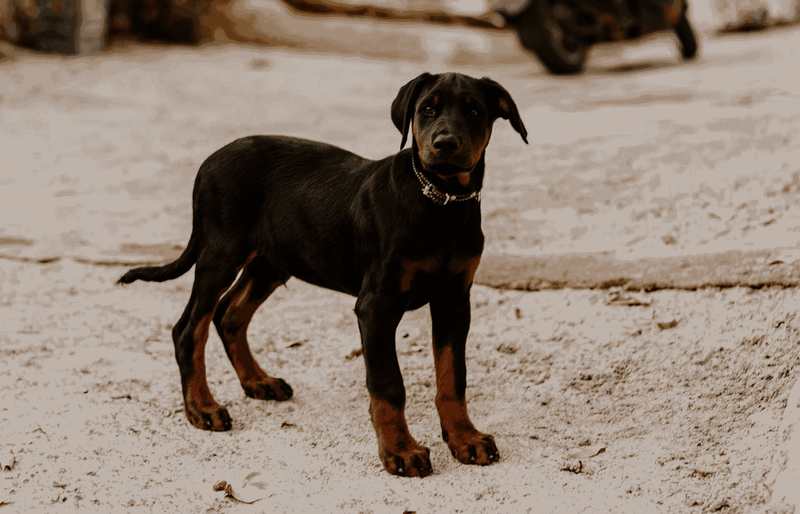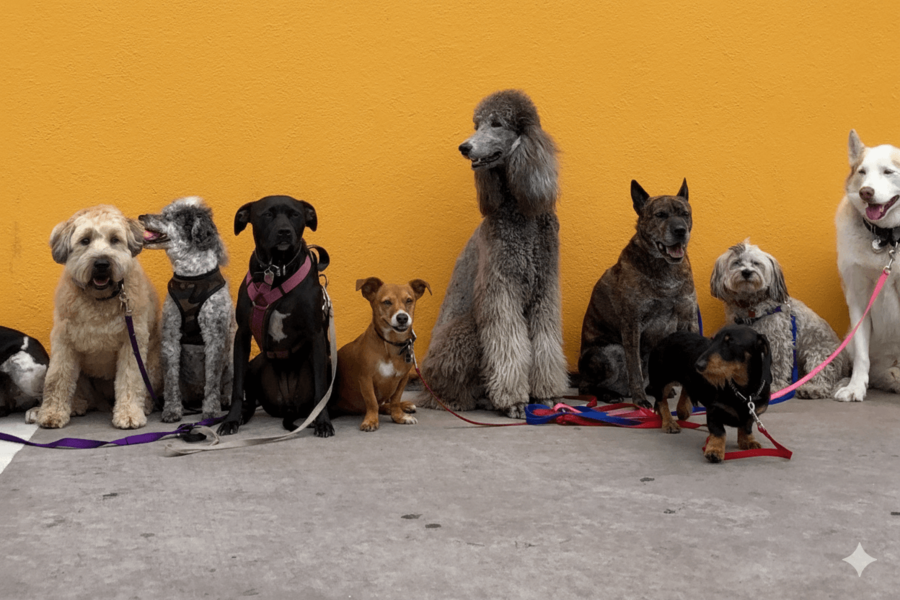
The Doberman, also known as the Doberman Pinscher in some regions, is a highly intelligent and loyal breed known for its sleek appearance, strength, and versatility. Originally bred for protection and security, the Doberman is a popular choice for families, police, and military work alike.
History and Origin
The Doberman breed was developed in the late 19th century by a German tax collector named Karl Friedrich Louis Dobermann. Dobermann sought a dog that could protect him during his rounds, leading him to create a breed that was both fearless and loyal. By selectively breeding several dog types, including the Rottweiler, German Pinscher, and Greyhound, he created the Doberman—a breed known for its protective instincts and loyalty.
Physical Characteristics
- Size: Dobermans are a large breed, standing between 63-72 cm at the shoulder, with females typically being slightly smaller than males.
- Weight: They usually weigh between 32-45 kg, with males being heavier.
- Body: The Doberman has a sleek, muscular build with a deep chest, long neck, and a straight back. Their athletic physique allows them to be both powerful and agile.
- Coat: The coat is short, smooth, and close-lying, with colours typically being black, blue, red, or fawn, often with rust-coloured markings on the muzzle, chest, legs, and beneath the tail.
- Face: Dobermans have a long, wedge-shaped head with a strong jaw and a keen, alert expression. Their ears are often cropped and their tails docked in countries where this practice is still permitted, though in the UK, these procedures are generally discouraged.
- Tail: When not docked, their tail is long and thin, carried in a slightly curved position.
Temperament
Dobermans are known for their intelligence, loyalty, and protective nature. They are often described as "people-oriented" dogs that thrive on human companionship and are eager to please their owners.
- Family Companion: Despite their reputation as guard dogs, Dobermans are affectionate and gentle with their families. They are particularly good with children and can be quite playful.
- Intelligence: Ranked among the most intelligent dog breeds, Dobermans are quick learners and excel in obedience training. They require consistent, positive training methods and benefit from mental stimulation, such as puzzle toys or advanced training exercises.
- Protectiveness: Dobermans have a strong protective instinct and are naturally wary of strangers. This makes them excellent guard dogs, but it also means they require proper socialisation from a young age to ensure they do not become overly aggressive.
Health and Lifespan
Dobermans have an average lifespan of 10-13 years. While generally healthy, they are prone to certain hereditary health issues:
- Dilated Cardiomyopathy (DCM): This is a common heart condition in Dobermans, leading to an enlarged heart and eventual heart failure. Regular veterinary check-ups are essential for early detection and management.
- Von Willebrand's Disease: A bleeding disorder that can affect Dobermans, similar to haemophilia in humans. Blood tests can diagnose this condition.
- Hip Dysplasia: Like many large breeds, Dobermans can suffer from hip dysplasia, a condition where the hip joint does not fit properly, leading to arthritis and pain.
- Hypothyroidism: This is a condition where the thyroid gland does not produce enough hormones, leading to weight gain, lethargy, and skin issues.
Care and Grooming
- Exercise: Dobermans are an active breed that requires regular exercise to keep them mentally and physically stimulated. A minimum of 1-2 hours of exercise per day, including walks, playtime, and training sessions, is recommended.
- Grooming: Their short coat is low-maintenance, requiring only weekly brushing to remove loose hair and keep the coat shiny. Dobermans are clean dogs with minimal odour, and they typically require bathing only when necessary.
- Feeding: A high-quality, balanced diet that meets their nutritional needs is crucial. Dobermans should be fed according to their age, weight, and activity level, with portion control to prevent obesity.
- Vet Visits: Regular veterinary care is important, particularly for monitoring any potential hereditary conditions.
Living Conditions
Dobermans are adaptable dogs that can live in a variety of environments, provided they receive sufficient exercise and mental stimulation. However, they are not well-suited to outdoor living, especially in cold climates, due to their short coat. They prefer being close to their families and can become anxious or destructive if left alone for long periods.
Conclusion
The Doberman is a versatile and devoted breed that excels in both family and working roles. With proper training, socialisation, and care, they are affectionate, loyal companions that form strong bonds with their owners. Their striking appearance and protective nature make them both a formidable guard dog and a loving family member. For those willing to invest the time and effort into their care, the Doberman is an exceptional breed.
You can take a look at all of our Dobermans for sale or feel free to contact us if you have any questions.
